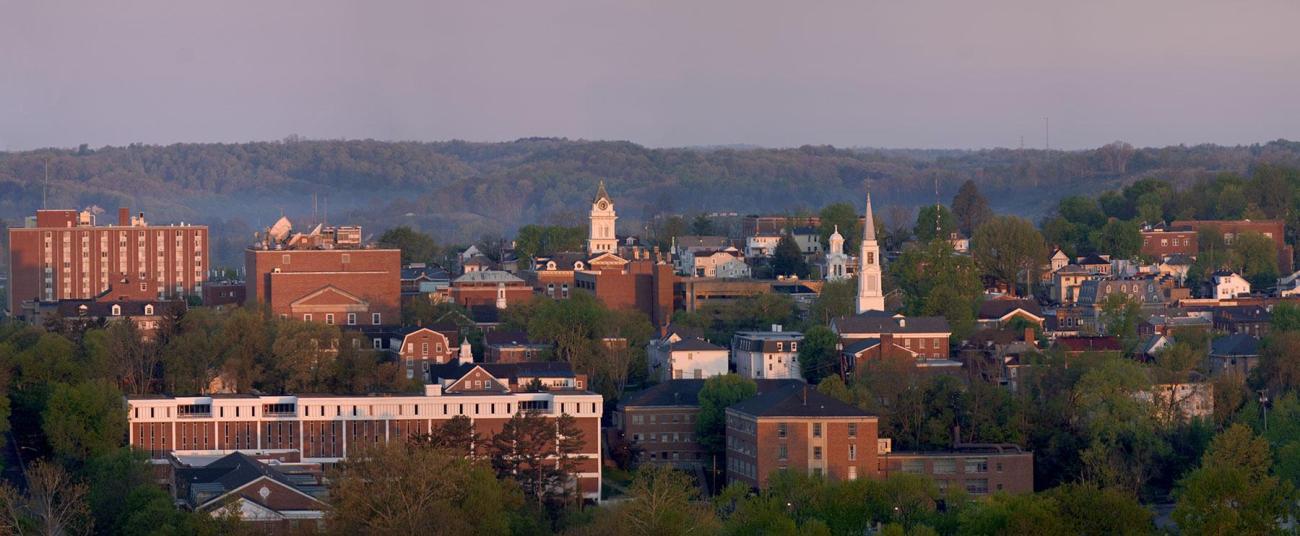
Core: Engagement

The 2017 Engagement infographic outlining progress towards the 2011 sustainability benchmarks and new goals set for fiscal year 2026. Click the tabs below to learn more!
Current Data


Accessibility View of Engagement Graphic
Progress toward 2011 Sustainability Plan (as of 2017)
Benchmark 8: Improve sustainability literacy of students, faculty and staff. Target met and strategies in progress.
- Benchmark 33: Encourage residency in City of Athens for Athens campus employees. Target partially met, but benchmark will be abandoned in new plan.
Engagement Graphics
The above graphic shows how Ohio University compares for campus engagement against other programs by STARS. As seen above, Ohio University is well above the national average.
The above graphic shows how Ohio University compares for community engagement against other programs by STARS. As seen above, Ohio University is well below the national average.
The above graphic shows the breakdown of carbon emissions at Ohio University. All campus emissions can be tied to engagement either directly or indirectly.
2017 Sustainability & Climate Action Plan Goal #1
Goal 1: Create, enhance and track transformative sustainability engagement ecosystems by increasing the number of ecosystems from 1 to 16. Engagement ecosystems are initiative-driven working groups which ideally include members of all the following: OHIO faculty, OHIO staff, the local community and the OHIO student body
Potential Strategies
- Sustainability Project Laboratory
- Sustainability Hub initiatives
- Center for Community Engagement, Experiential Learning, Honors Programs, and Office of Sustainability collaborations on sustainability experiential learning projects
- Ohio Sustainability Professionals Consortium participation
Benefits of Goal #1
- Community building
- Increased reputation and enrollment
- Proactive environmental behavior
Costs of Goal #1
- Capital expenses
- Operation and management costs
Employee time is required to create these ecosystems, but it will save employee time in the long run, thereby making it both a benefit and a cost.
2017 Sustainability & Climate Action Plan Goal #2
Goal 2: Continue offering opportunities for alumni, campus and community members to learn about or contribute to sustainability initiatives by creating and maintaining the following opportunities.
- Opportunities to maintain:
- Student Sustainability Educators
- Sustainability in Orientations
- Sustainability in Student Life
- Participation in Pubic Policy Advocacy for Sustainability (as defined by AASHE STARS Technical Manual EN-14 (opens in a new window))
- Community Sustainability Partnerships
- Sustainability Outreach
- Sustainability Professional Development
- Opportunities to increase:
- Increase the number of Sustainability Continuing Education courses from 2 to 10
- Increase the percentage of students participating in community service from 24% to 50%
Potential Strategies
- Create Sustainability Badge Course for Employees
- Expand Sustainability Alumni Network for Alumni
- Expand Sustainability Tracking & Evaluation Program (STEP) for Employees
Benefits of Goal #2
- Increased positive reputation
- Social justice benefits
- Proactive environmental behavior
- Saves volunteer time
Costs of Goal #2
- Capital expenses
- Staff time
Initiatives
2023 Hub-Supported Initiatives
| Initiatives | Goals | SCAP Alignment |
|---|---|---|
Climate and Sustainability Ambassadors: A decentralized student volunteer and climate action group.
|
| Waste Reduction, Energy Use Reduction, Transportation Emissions Reduction. Improving Climate Literacy. |
Hub Seminars: Monthly Seminars, open to the public for Hub Coordinators, Faculty and Staff to discuss SCAP goals. | To promote communication regarding the University’s Climate Action plan with students, staff, and faculty; and across all campuses and centers | Communication and Education for all SCAP targets and initiatives |
| Sustainability Network | To connect campus sustainability groups for sharing of goals, ideas, action plans, and volunteers | Waste Reduction, Energy Use Reduction, Transportation Emissions Reduction. Improving Climate Literacy. |
| Sustainability Project Laboratory | To provide students opportunities for service learning and research through sustainability project development and implementation | Waste Reduction, Energy Use Reduction, Transportation Emissions Reduction. Improving Climate Literacy. |
OHIO Experts & Stakeholders
| Name | Contact | Description | |
|---|---|---|---|
| Geoffrey Dabelko | dabelkog@ohio.edu | Professor; Associate Dean, Voinovich School | |
| Katelyn Rousch | kr918518@ohio.edu | Athens Environment and Sustainability Commissioner; Leadership for Sustainability Network | |
| Mary Nally | nallym@ohio.edu | Director, Center for Community Engagement | |
| Ryan Fogt | fogtr@ohio.edu | Professor of Geography and Meteorology |
